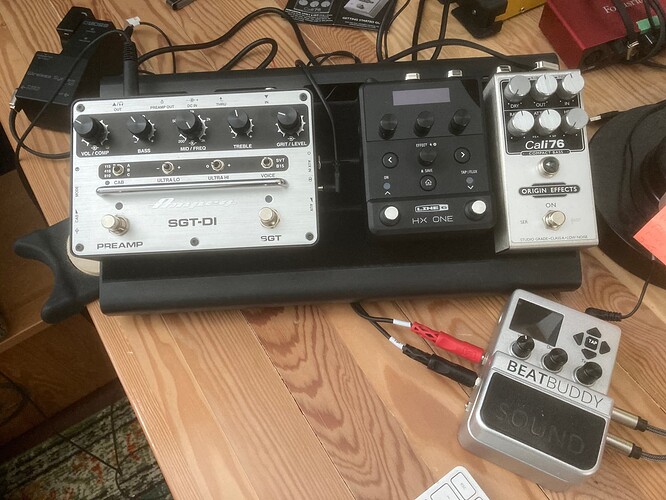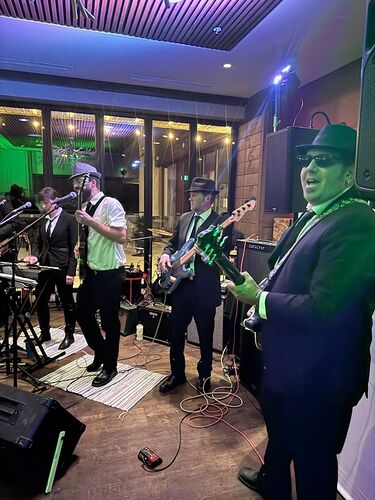Ok, I’m just a little over halfway through BtBA, so maybe this comes later, but so far, at least, there’s been one major element I feel is missing from the course: using a metronome.
Now different people will have different philosophies, different approaches, but I’ve been told the following by two different bass teachers I’ve had, and I think it’s true.
It’s a good idea practice with a metronome. Even if you’re playing a scale, arpeggios, whatever.
Why? Because the most important part of being a bass player is rhythm. Yes, even more important than playing the root. Your rhythm has to be solid. Your timing has to be solid. You can survive screwing up and playing a wrong note. The band will survive. The song will survive. But screw up the rhythm, lose the pulse, and it’s over. The song may even collapse. You may get fired.
So this is something that needs to be trained like anything else. I had one bass teacher go so far as to say I should never play my bass at all without a metronome. He said everything I play should be in time.
So while you’re practicing your scales, arpeggios, a song, or whatever, you can also be practicing your time.
Now you can pick any bpm you want. I’m not saying you have to play fast. If you’re learning the minor scale, say, and want to practice that, choose a bpm that’s nice and slow and comfortable for you. But use a metronome. That’s the only way you’ll know when you lose the pulse. That’s the only way you’ll learn to feel it in your body.
As you get more practiced, you can have some fun with it too. Here are some things you can do.
Let’s say you’re practicing a part that’s at 120 bpm, and you can play at that tempo comfortably.
-
Set your metronome to 60 bpm (half the tempo). You’re still going to play at 120, but now instead of the click (or beep) being on 1, 2, 3, 4, the click is on 1 & 3 (or 2 & 4, depending on the style of music you’re playing). So the metronome is helping you with every other beat, and you’re responsible for the other two. So the metronome plays on 1 and 3 and you’re responsible for 2 and 4. Play your passage you’re practicing, and practice staying in time. When you hit 1 at the beginning of each measure, are you still in time with the metronome?
-
For the next level, set your metronome for 30 bpm (1/4 the tempo). Now the click is only on beat 1, and you’re responsible for beats 2, 3, 4. Play your passage. Can you stay in time and hit each 1 with the metronome?
-
For the next level, halve the metronome tempo again (so 15 in our example). Now the click is only on beat 1 of every other measure. So the metronome plays a beat, and now you’re responsible for the next 7 beats. Are you arriving with the metronome on beat 1 of every other measure?
-
You can continue increasing the difficulty in this way. Having the metronome play only once every 3 measures, 4 measures, and so on. You can also have the click be on beat 2, 3, or 4 instead of 1 if you like. So the click is beat 3 of every measure, or beat 3 of every other measure. And so on.
In this way you use the metronome as a tool, not a crutch.
Ok, you may say, that sounds great. But metronomes are boring. Why not play with my fancy drum machine instead? Of course you can do that. However, although it may be more fun, it’s also giving you a lot more information, so you don’t have to rely on your own timing, you can just listen to the drum machine. You may have the kick drum on 1 and 3, and the snare drum on 2 and 4. The ride cymbal is hitting all the quarter notes, and the closed high hat is hitting all the 8th notes. That’s a lot of information, and unless you have some long runs of 16th or 32nd notes, you don’t really have to keep the pulse or time yourself.
My first bass teacher was phenomenal. He’s ridiculously good. And he still practices with a metronome, so it’s a skill that you can always work on and improve.
Anytime you’re not playing in time, whether you’re just noodling, or playing a scale, or whatever, you’re practicing a bad habit.
As bassists we almost ALWAYS play in time (you don’t see a lot of rubato in popular music, and even when you do, it’s only for a measure or a few measures). My first band teacher told me, “You will perform how you practice, so you should practice how you want to perform.”
The band relies on us to keep the pulse.
The drummer will love us if we can keep the pulse.
This is the way.
(DISCLAIMER: I’m not saying I always do this myself. I am saying I know that I always should. Just passing on what I’ve learned from some really great bass teachers. Some people might think this is more of an intermediate thing, but it really is something we should be doing from the very beginning. Honestly, we should probably be playing various rhythms on an open E to a metronome before we ever start fretting, but that’s not very fun. ![]() )
)


